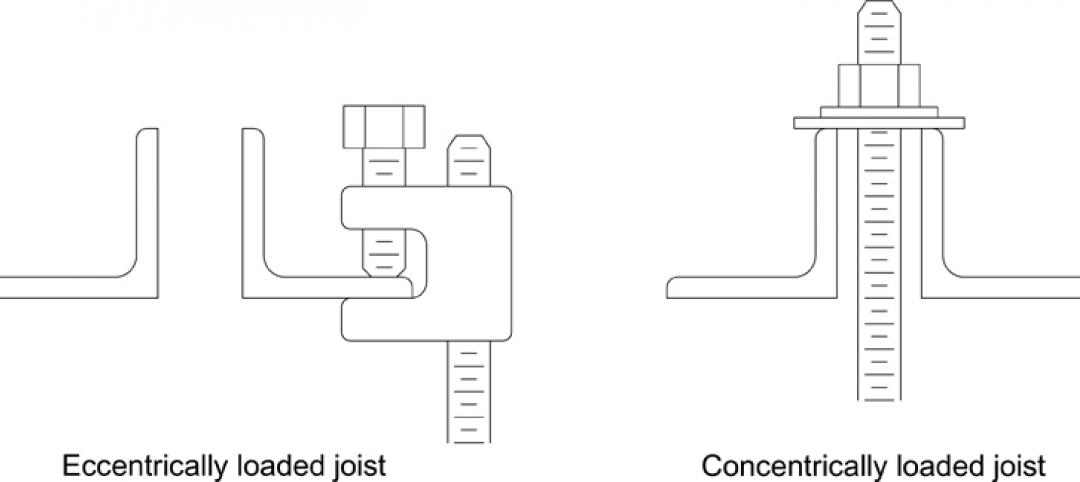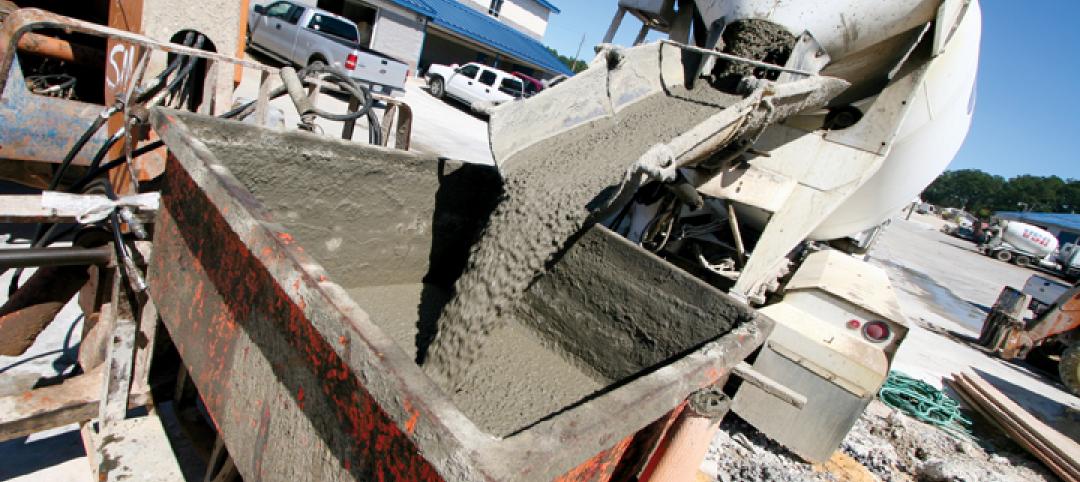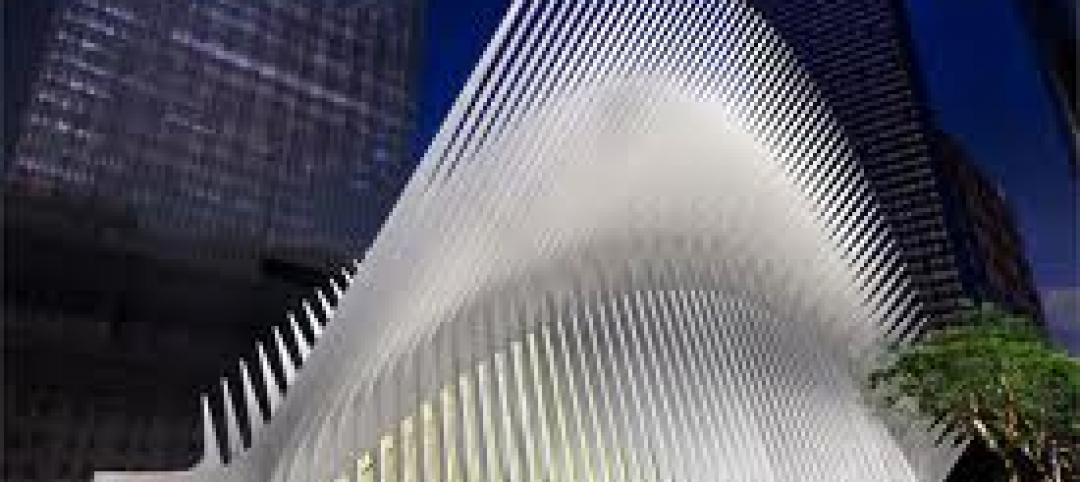 |
|
In an effort to reduce carbon dioxide emissions and reliance on fossil fuels, the design team for the nine-story, 30-meter-tall Stadthaus tower in East London chose to build the structure entirely in wood. |
At a glance, East London's newest high-rise apartment complex looks like your typical multifamily residential tower. All 29 units in the nine-story, mixed-use development come standard with hardwood floors, granite countertops, stainless-steel appliances, and exterior balconies. Bright-white plasterboard finishes provide a blank canvas for residents, while large, operable windows let in fresh air and offer views of the surrounding Hackney borough.
But behind the high-end finishes is an all-wood structure that is as unconventional as construction gets these days. When it was completed this past January, the 30-meter Stadthaus tower stood as the world's tallest residential structure constructed entirely in timber and one of the tallest all-wood buildings on the planet.
Why use wood when concrete and steel are proven, economical solutions for high-rise construction?
 |
|
The tower’s structural system consists of cross-laminated timber (CLT) panels pieced together to form load-bearing walls and floors. Even the elevator and stair shafts are constructed of prefabricated CLT. |
For design architect Andrew Waugh, the decision to go with wood was purely a sustainable one.
"We'd been looking for ways in which we could replace concrete and steel construction wherever possible in an effort to reduce carbon dioxide emissions and reliance on fossil fuels," says Waugh, director of Waugh Thistleton Architects, which teamed with structural engineer Techniker Ltd. (both based in London) to design the structure for owner/developer Telford Homes, Hertfordshire.
Waugh says that by using wood for the structure instead of concrete or steel, the team was able to construct a building that has far less embodied CO2 emissions and reliance on fossil fuel—calculations show that the building will be carbon-neutral in just 21 years. The prospect of long-term CO2 emissions savings was enough to convince the client and local code and city officials to move ahead with the unusual, all-wood design scheme.
 |
 |
|
The finished apartments look like typical multifamily residential units, with bright-white plasterboard finishes and large, operable windows. But behind the plasterboard are solid wood panels instead of traditional steel or wood studs. The wall panels are 41/2 inches thick and the floor panels are six inches thick. |
Since traditional wood-frame construction is not rated for buildings taller than three or four stories, the design team had to come up with an alternative construction method for the Stadthaus project. Waugh's design team found a solution in cross-laminated timber (CLT), a process by which wood sandwich panels are formed by gluing timber strips together in a crisscross pattern to create a solid mass element with minimal movement characteristics.
"It's basically jumbo plywood," says Waugh, who says the panels can be anywhere from just under two inches thick to three feet thick, depending on the application. The result is a structurally rated unit that can be integrated with other panels to form load-bearing walls and floors for mid- and high-rise structures—without the need for concrete or steel structural members.
At Stadthaus, even the elevator and stair shafts are constructed of prefabricated CLT. The only concrete used in the building is for the foundation system and two-inch-thick floating slabs atop the timber floors for acoustical insulation.
 |
|
Cross-section shows the simplicity of the structural design. The cross-laminated timber walls and floors are held together with steel angles and screws. |
The design team specified 4½-inch-thick panels for the walls and six-inch-thick panels for the floors. Austria-based KLH fabricated panels and erected the final structure. All door and window openings were cut out in the factory using a CNC router. The finished panels were shipped to the job site, where they were craned into position and secured using two-inch galvanized steel angles and three-inch screws. In areas where additional reinforcement was required, screws were added to strengthen the structure. Progressive collapse is avoided by providing sufficient redundancy so that any single element can be removed without structural failure.
"The beauty behind the whole system is that it's incredibly simple," says Waugh, adding that it took the four-man KLH construction crew just 27 days to erect the nine-story structure. The construction time savings helped to compress the overall project schedule to just 46 weeks—40% shorter than if the team used traditional concrete frame construction, according to Waugh. "The guys building the structure come from the same factory where the timber panels were manufactured, so the understanding of the material is constant throughout the process."
Like most CLT manufacturers, KLH uses formaldehyde-free adhesive products, such as PUR, to form the panels, which are manufactured in 10×40-foot sheets. The panels have zero off-gassing and can be converted into biomass fuel at the end of their useful life—a process that KLH relies on to power its manufacturing facility and a nearby village.
"The material itself has an asset value throughout its life, unlike strand board, which is held together with formaldehyde- or solvent-based adhesives and must go into landfill," says Waugh. This means that the Stadthaus tower is completely recyclable and may one day be dismantled to help power London's omnibuses—or its electrical grid.
Related Stories
| Jan 3, 2012
New SJI Rule on Steel Joists
A new rule from the Steel Joist Institute clarifies when local reinforcement of joists is required for chord loads away from panel points. SJI members offer guidance about how and when to specify loads.
| Jan 3, 2012
AIA Course: New Developments in Concrete Construction
Earn 1.0 AIA/CES learning units by studying this article and successfully completing the online exam.
| Jan 3, 2012
The Value of Historic Paint Investigations
An expert conservator provides a three-step approach to determining a historic building’s “period of significance”—and how to restore its painted surfaces to the correct patterns and colors.
| Jan 3, 2012
28th Annual Reconstruction Awards: Bringing Hope to Cancer Patients
A gothic-style structure is reconstructed into comfortable, modern patient residence facility for the American Cancer Society.
| Jan 3, 2012
Art Gensler: Still Making a Difference for Clients Every Day
After running what is today the largest architecture firm in the world for more than four decades, M. Arthur Gensler, Jr., FAIA, FIIDA, RIBA, is content to be just another employee at the firm that bears his name.
| Jan 3, 2012
Gensler: 'The One Firm Firm'
The giant architecture firm succeeds by giving each of its more than 3,000 employees the opportunity for career growth and professional leadership.
| Jan 3, 2012
Rental Renaissance, The Rebirth of the Apartment Market
Across much of the U.S., apartment rents are rising, vacancy rates are falling. In just about every major urban area, new multifamily rental projects and major renovations are coming online. It may be too soon to pronounce the rental market fully recovered, but the trend is promising.
| Dec 29, 2011
OSHA enforcing new fall hazard standards
OSHA is enforcing its new fall protection standards, as evidenced by a recent crackdown in New York.
| Dec 29, 2011
Decision not to fireproof the new World Trade Center Transportation Hub criticized
Some criticized the decision, reasoning that the structure could be a terrorist target.
| Dec 29, 2011
Seismic safety in question at thousands of California public schools
California regulators responsible for enforcing earthquake safety laws have failed to certify more than 16,000 construction projects in California public schools, increasing the risk that some projects may be unsafe, according to a state audit report.
















